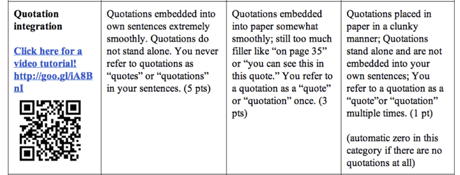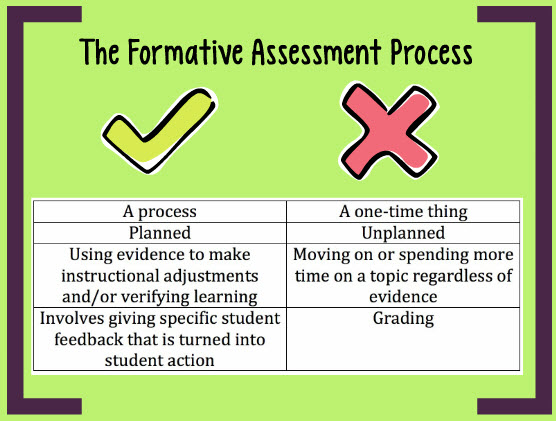For this module, I decided to investigate ISTE standard 4.4b – help educators use digital tools to create effective assessments that provide timely feedback and support personalized learning. ISTE standard 4.6 also relates to the use of qualitative and quantitative data to inform one’s own instruction and professional learning.
Designing learning activities with the end in mind, consistent with the Understanding by Design framework, also need to include data showing where students are before and during the learning process. It has been my experience that there are students who lack skills needed for certain tasks that are part of the lesson. I have observed that this has been more prevalent this year, possibly due to the Covid relate school closures aftermath. Furthermore, student absenteeism has always posed challenges, but even more so this year. Ongoing assessments are essential.
What formative assessments 1) provide timely feedback on individualized student progress, and 2) scaffold support for personalized learning?
“Educators must use formative assessments, which gives learners opportunities to receive feedback at benchmarks along the way” (Foltos, 2013, pg. 129).
Formative assessment is an integral part of teaching and learning. It not only encourages self-reflection, and lets students know where they are at a given time, but also provides information on how to proceed. Through formative assessment, teachers also gain feedback on the impact that the learning activities have on student learning. Nevertheless, teachers need to evaluate the success of the learning activity’s impact on each student. While one activity may be supporting some students, the same activity may have lesser impact on different students.

There are many digital tools that can be used to evaluate learning informally and which can be used by students and teachers. The article from common sense education Top Tech Tools for Formative Assessment, includes a detailed review of the top 30 most common tools. This site provides the name of the tool, the link to the website, a brief description of the tool, and a link to a more detailed review, which includes rating, grades, and examples.
It is important, however, that the tools are used to provide information to students and teachers that can then be used to guide learning and improve learning activities. Is it possible that students enjoy the tool but may not be maximizing its potential for learning? According to Brown, Roediger III, and McDaniel, yes. In their book Make it Stick (2014), the authors explain that often students miss evaluating correctly their learning strategies and results. One example given is the illusion of knowing which results after students re-read or practice material gaining a familiarity with the material, but no real understanding or mastery.
Both teachers and students need to engage in the reflective process after each formative assessment is completed. Additionally, it is important to store the data for future use and comparative evaluations. Students can fill out a quick reflective evaluation after they used an evaluative tool, and document what they learned and what they still need to improve. Teachers can also analyze how effective is the student’s self-evaluation of their learning. Does the student self-reflection and teacher evaluation match? If not, the teacher may have to provide instruction and tools that help students improve the self-evaluation process.
In the article from ResearchGate, Linking Formative Assessment to Scaffolding, the author explains the interrelationship between formative assessment and instructional scaffolding. The four strategies that show this connection are “eliciting prior knowledge, providing effective feedback, teaching for transfer of knowledge, and encouraging student self-assessment.”
Teachers can integrate scaffolding into formative assessments through the use of interactive rubrics. The article Interactive Rubrics as Assessment for Learning, by Michelle Lampinen, give simple yet powerful examples of digital rubrics that can help guide not only the learning activities, but also differentiate instruction. A rubric that includes QR codes, links to videos, documents, or tutorials, can provide assessment, immediate feedback, and a personalized learning experience for students.

In conclusion, using formative assessment strategies and tools is only part of the process. The information gained from formative assessments must be documented, analyzed, and used to guide, scaffold, and improve student learning.
Resources
Brown, P. C., Roediger III, H. L., & McDaniel, M. A. (2014). Make it Stick. The Belknap Press of Harvard University Press.
Foltos, L. (2013) Peer Coaching – Unlocking the Power of Collaboration. Corwin.
ISTE Standards for Coaches. Accessed October 24, 2021. https://www.iste.org/standards/iste-standards-for-coaches
Lampinen, M. (2013). Interactive Rubrics as Assessment for Learning. Edutopia.
Shepard, L. (2005). Linking formative assessment to scaffolding. Educational Leadership: Journal of the Department of Supervision and Curriculum Development, N.E.A. 63(3).
Sweeney, D., & Harris, L. S. (2020) Student-Centered Coaching: The Moves. Corwin.



